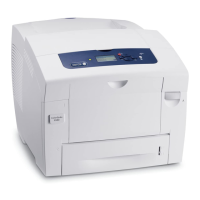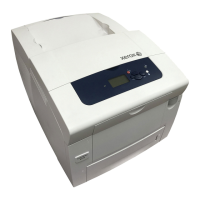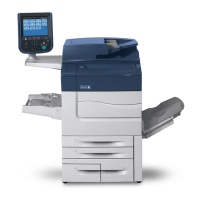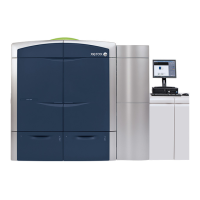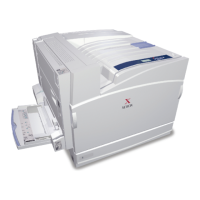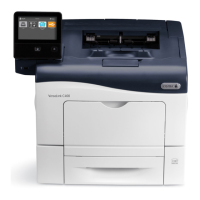Installation and Setup
ColorQube 8570/8870 Color Printer
User Guide
33
Manually Assigning the IPv4 Address
Notes:
• These instructions are for connecting using the IPv4 protocol. For details on IPv6, see
Configuring IPv6 on page 34, or refer to the CentreWare IS online help.
• Verify that your computer has a properly configured IP address for your network.
Contact the network administrator for more information.
If you are on a network without a DNS server, or in an environment where the network administrator
assigns printer IP addresses, you can use this method to manually set the IP address. If you are in a
small office with a single PC and use a dialup modem connection, you can also manually set the IP
address using this method.
Notes:
• When assigning the IP address manually, you will need to supply a Network Mask
address. If you are unsure of what this is, leave it blank. The printer will choose an
appropriate network mask address.
• When assigning the IP address manually, you will need to supply a default router or
gateway address. The router address is required to communicate with the host device
from anywhere other than the local network segment.
To manually set the IP address from the printer control panel using IPv4:
1. On the printer control panel, select Printer Setup and then press the OK button.
2. Select Connection Setup > OK.
3. Select Network Setup > OK.
4. Select TCP/IPv4 Setup > OK.
5. At IPv4, check the setting. If the setting is Off, press OK to change it to On.
6. Select DHCP/BOOTP > OK to set it to Off.
7. Select AutoIP > OK to set it to Off.
8. Select IPv4 Address: > OK.
9. Use the arrow buttons and the OK button to enter the IP address. The IP address is composed of
four banks of numbers separated by periods: xxx.xxx.xxx.xxx. At the first bank of numbers, use the
Up and Down Arrow buttons to select the first number in the address and then press OK to set the
number and move to the next bank of numbers. Repeat the process for the remaining banks of
numbers.
10. Press OK. The printer will display a message that it is checking for duplicate IP address numbers. If
it does not find any, you are done. If the number you entered is already being used by the
network, you will need to enter a different address.

